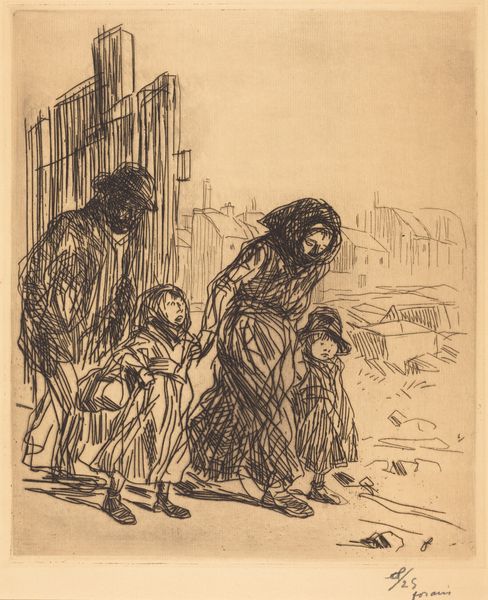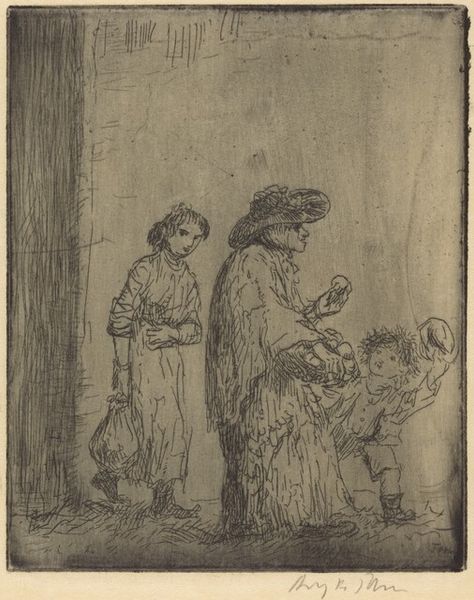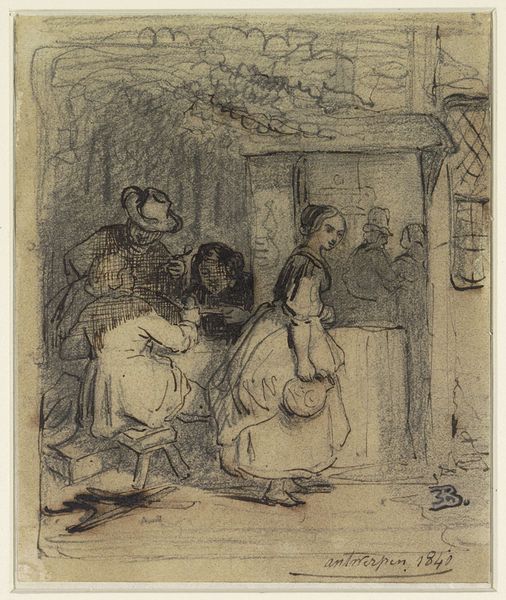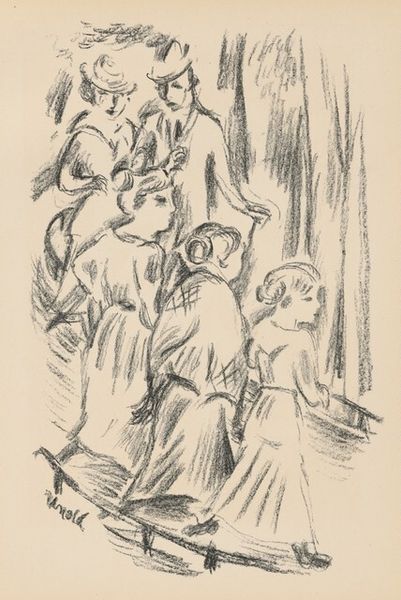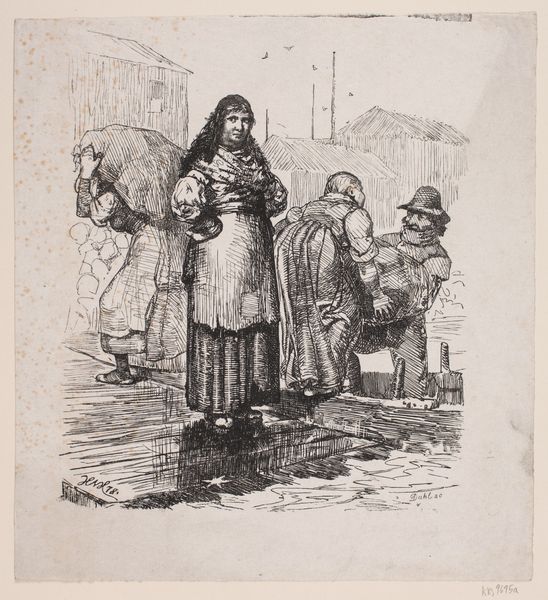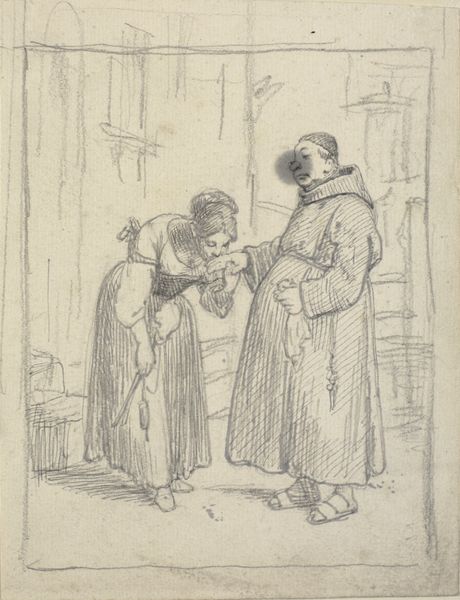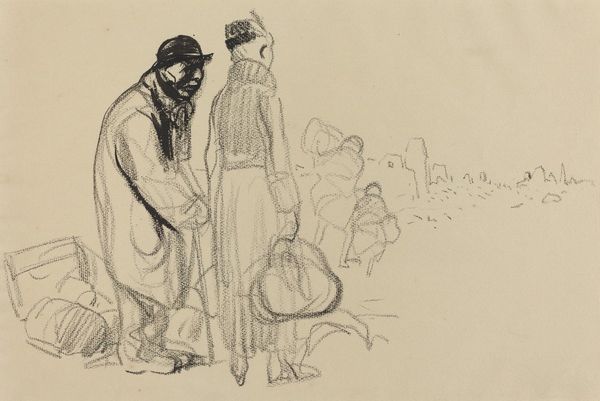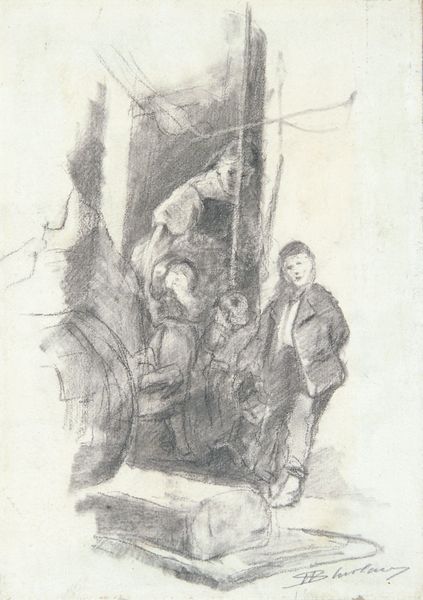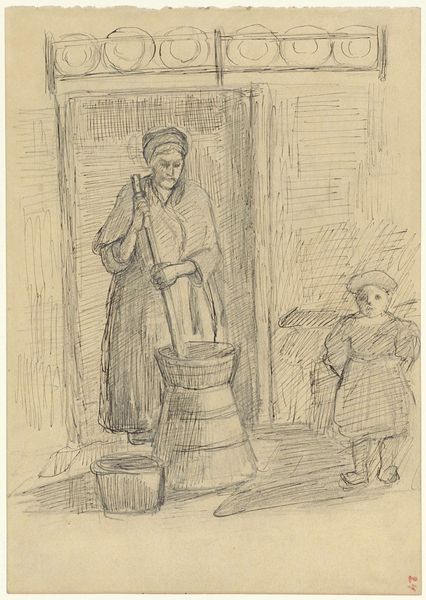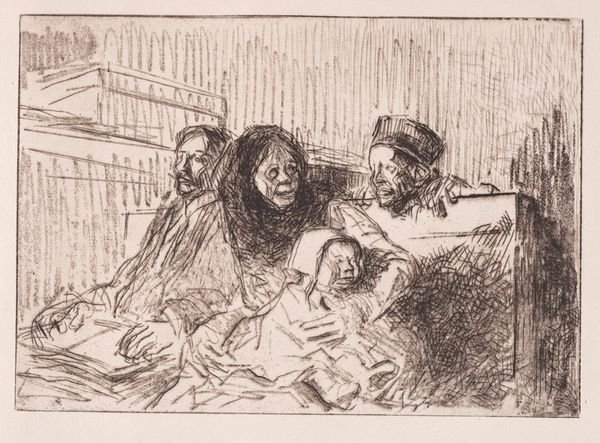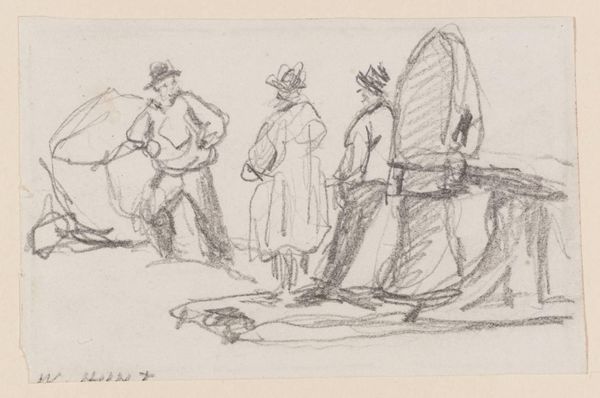
Copyright: Public Domain: Artvee
Curator: What a somber scene. There's a stark vulnerability that's palpable. Editor: Agreed. Steinlen's 1916 pencil drawing, "C’est ici, chez nous!" confronts us directly with the human cost of war. The title translates to "It is here, at our home!" adding a layer of painful irony. Curator: Look at how the figures dominate the foreground, particularly the mother. It is very powerful commentary when we examine Steinlen’s dedication to representing working-class life throughout his career. Editor: Absolutely. Consider the historical context too. This was created during World War I, and it serves as an important social document. The devastation in the background, the damaged buildings, they bear witness to what 'home' had become for so many families. The romantic style doesn’t romanticize war; rather, it draws on shared human empathy. Curator: Exactly. I notice the ruins sketched out rather than highly defined and the same with the figures traveling to the right. It isn't about individual heroism but a collective experience, of loss and displacement of entire families. What does this evoke for you? Editor: I'm drawn to their expressions; their resignation mixed with a fierce determination is gripping. It challenges dominant war narratives by shifting focus to those most affected by conflict. Steinlen isn't just depicting a scene; he’s capturing the complex emotional reality. I’m also interested in his choice to make a work on paper with a relatively 'simple' medium. Curator: And this stark medium emphasizes the rawness of the experience, avoiding any sense of grandiosity often associated with war imagery. It's an appeal for compassion and an implicit critique of the systems that caused this suffering. It certainly impacted how imagery from future conflicts would circulate and the social commentary such images made. Editor: Yes, it highlights art’s function as a historical record that encourages critical awareness and dialogue regarding issues of power, identity, and resilience amid destruction. It’s a reminder of the continued impact of war on individuals, families, and communities. Curator: Indeed, Steinlen gives us more than just an image, but a testimony, allowing the present-day to question and reflect. Editor: Exactly.
Comments
No comments
Be the first to comment and join the conversation on the ultimate creative platform.
